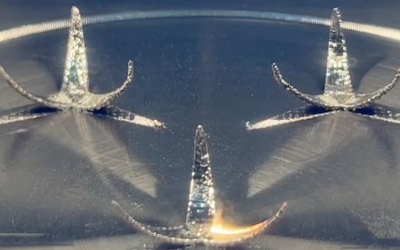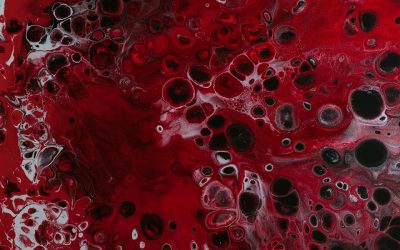The mineral bentonite can be found all over the world and is formed from weathering volcanic ash. It has some exceptional properties: when stirred into water, it demonstrates thixotropic behavior in which it becomes thinner and less viscous. It therefore acts as a fluid when mechanically stressed, for example when shaken or stirred, yet it hardens in static conditions.
Bentonite in drilling
The most common use of bentonite is in drilling fluids. The bentonite in the flush fluid lubricates and cools the cutting tools while protecting against corrosion. As the drilling fluid generates hydrostatic pressure in the borehole, it hinders fluid and gas penetration. The drilling liquid conveys the drill cuttings to the surface. When the purge pumps have idle periods, the thixotrophy of the bentonite hinders the stone material from dropping back into the drilled shaft.

As a flushing fluid, bentonite seals the drilled shaft from water ingress downwards and at the sides of the shaft. The mineral forms a firm sludge cake on the bore wall, which provides the borehole with additional stability. The fine bentonite particles enter into the bore wall where they swell and harden. Depending on the constitution of the ground structure, fine and coarse particles are needed.
The properties of the bentonite particles drilling applications are critical and tightly regulated.
A leading manufacturer of drilling grade bentonite in the Middle East supplies oil and gas worldwide, and since 2005, they have been using a NEUMAN & ESSER (NEA) grinding system to grind the bentonite. This system demonstrates impressive wear protection, which is a common issue given that impurities in bentonite cause increased stress, attrition, and wear and tear in the mill. Nonetheless, the abrasive material does little to harm the mill as all the components of the grinding system are designed to be robust and wear resistant.
Other applications of bentonite
As bentonite contains of 60-80% montmorillonite it provides special properties such as swelling and adsorption. The triple-layer silicate can absorb an exceptional quantity of water and expands by a multiple of the original size. The inner surface of a gram of bentonite is 400–600 m² – normal clay only has 2 m². The swelling and viscosity behavior of bentonite in the presence of water as well as its particularly high inner surface open numerous application options for the mineral.
Bentonite is used as a food additive as well as in cosmetics and pharmaceuticals as an additive in ceramics, in foundries, for paper and detergents and also as a surface coating in nanotechnology for varnish and paint. The multifaceted mineral is a heat stabilizer in plastics, air purgers, absorbents and binders.
This article was updated on February 4, 2021 to improve formatting
















